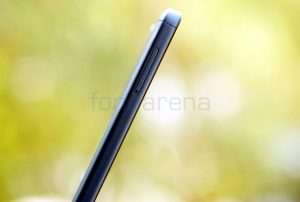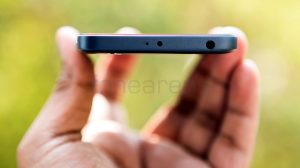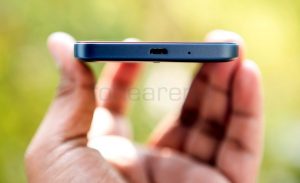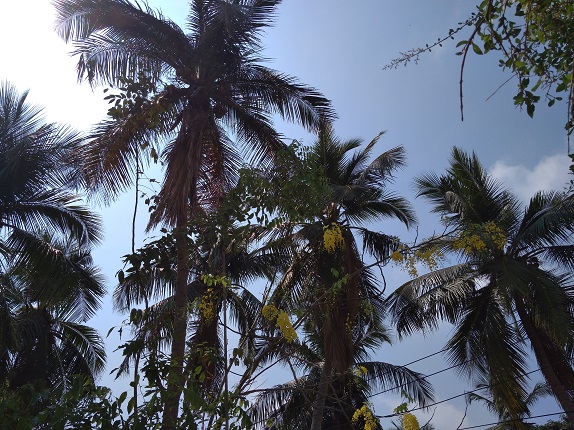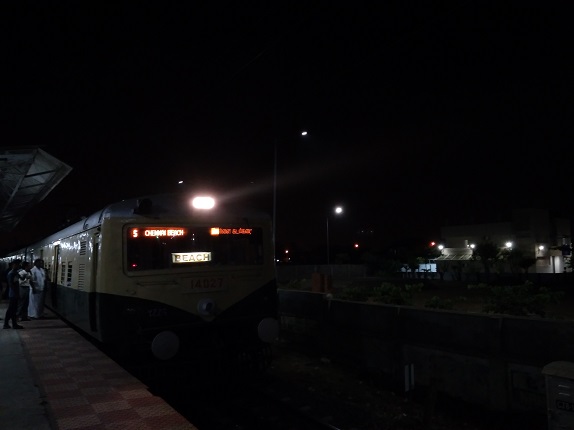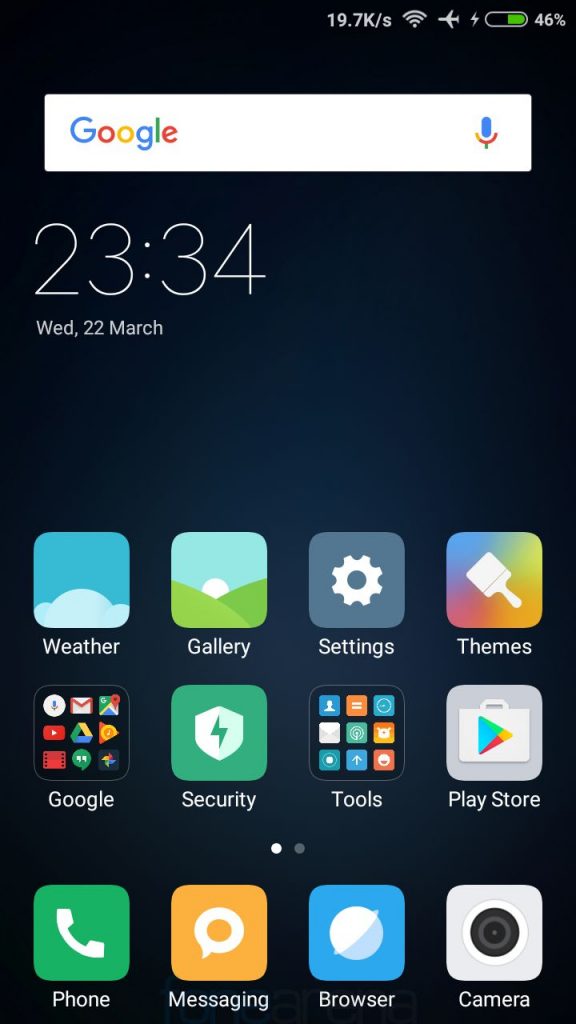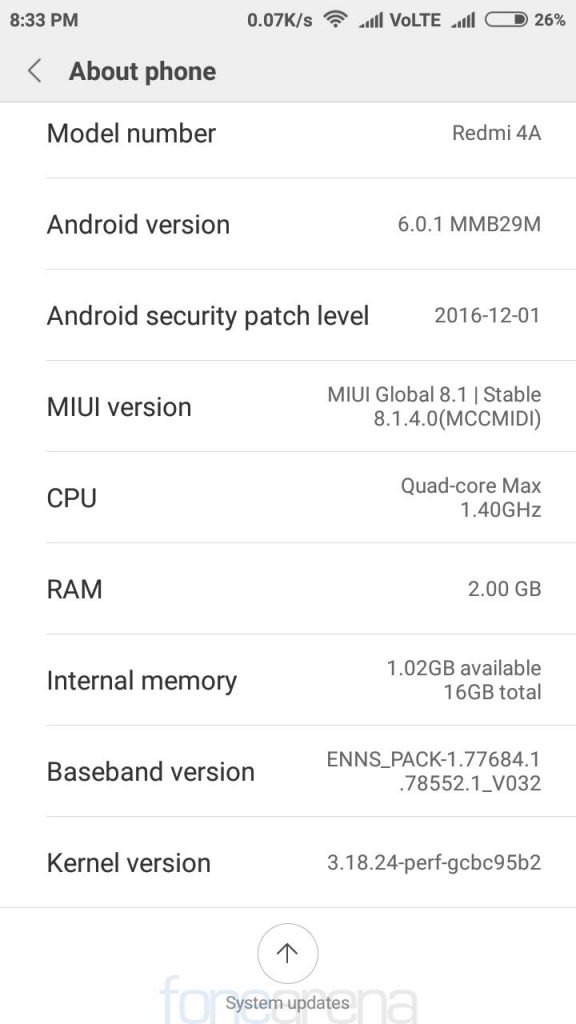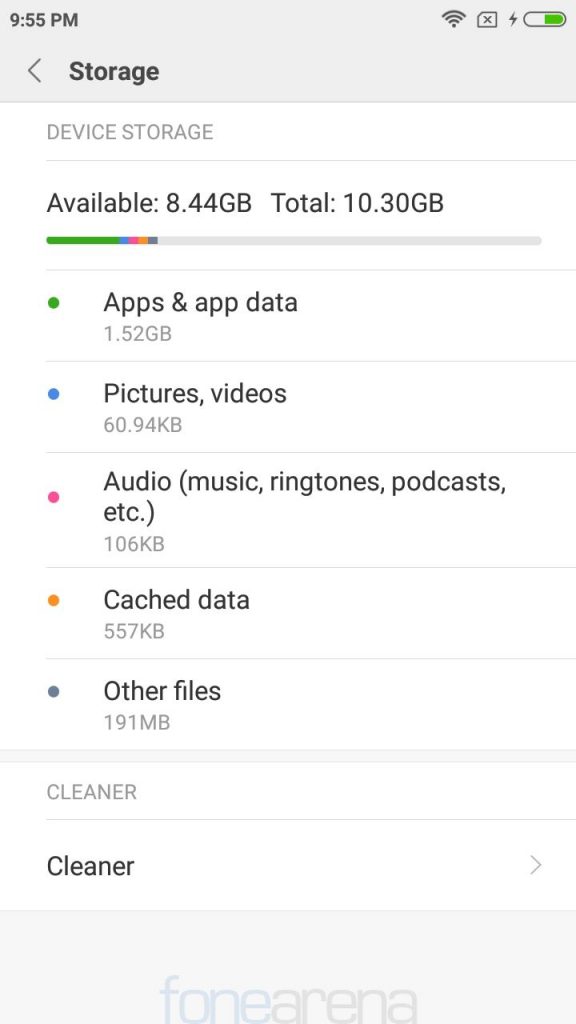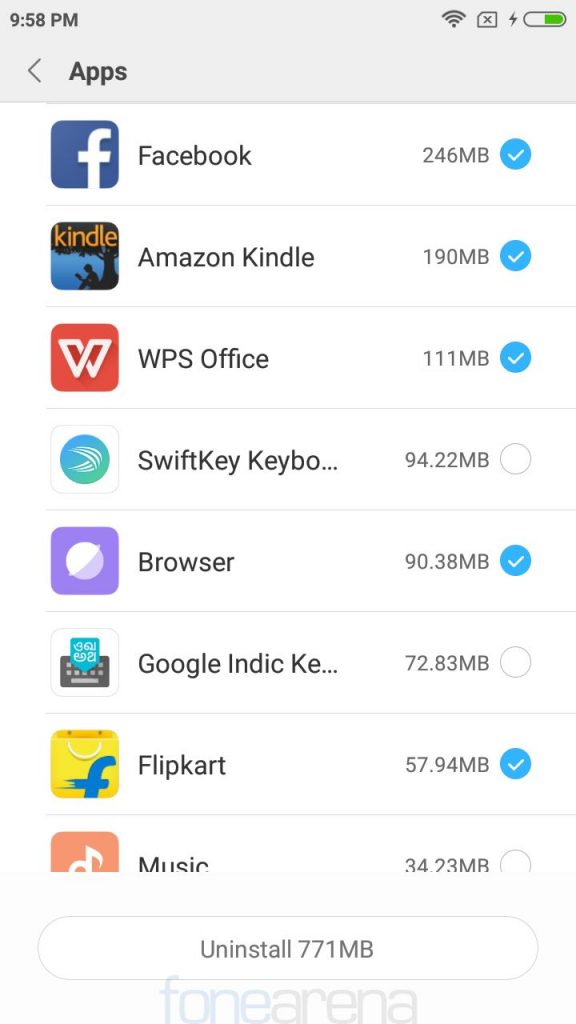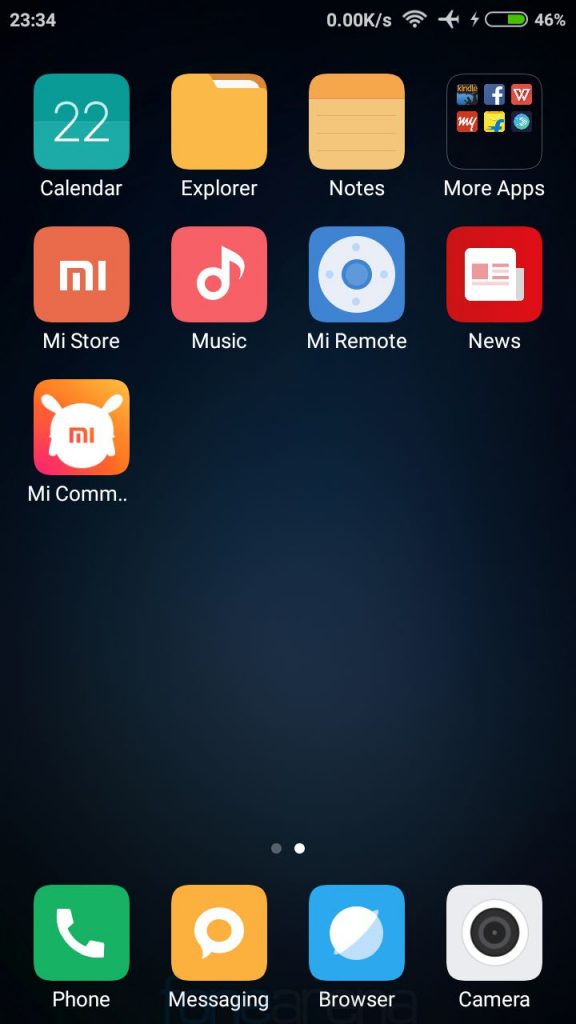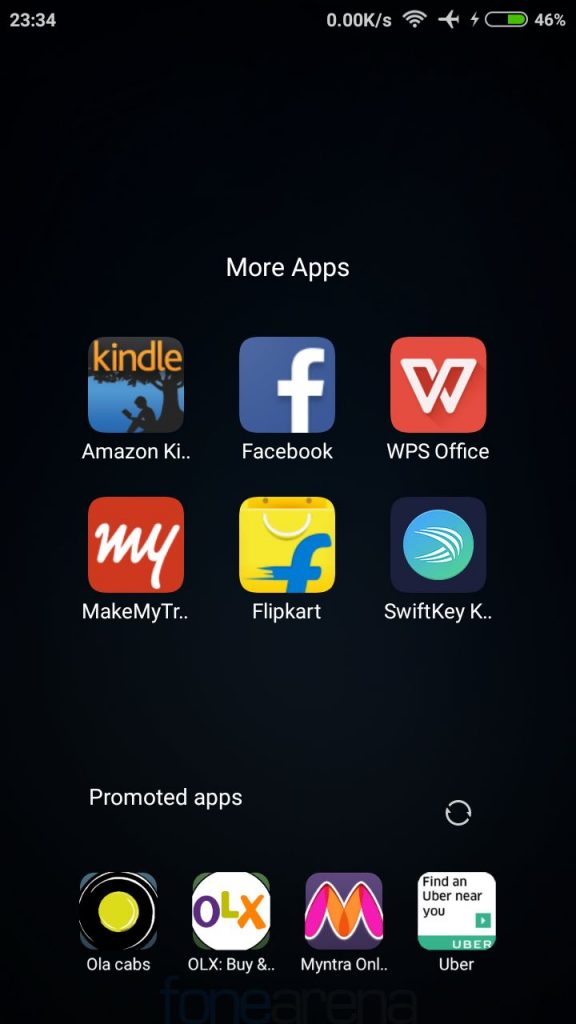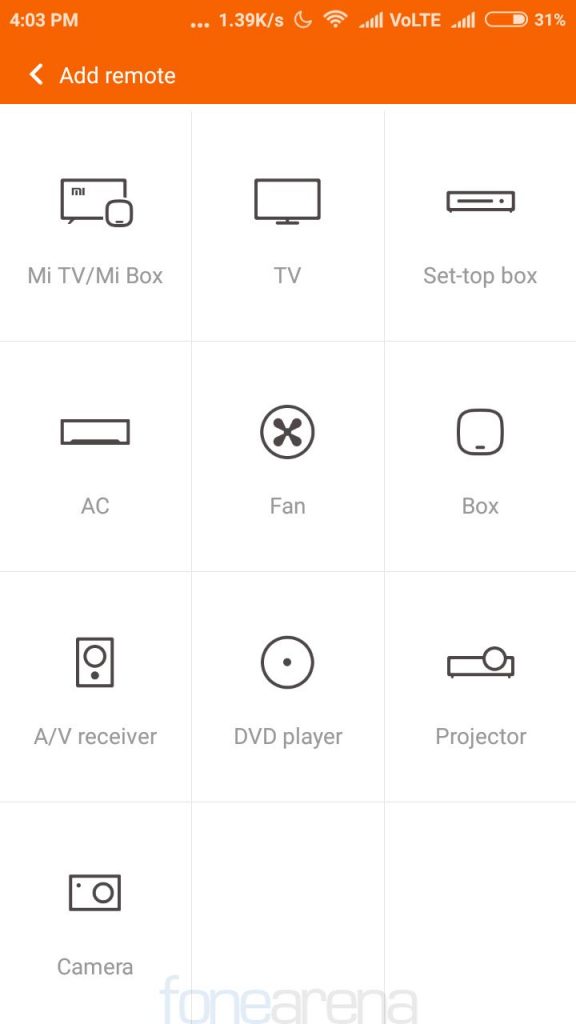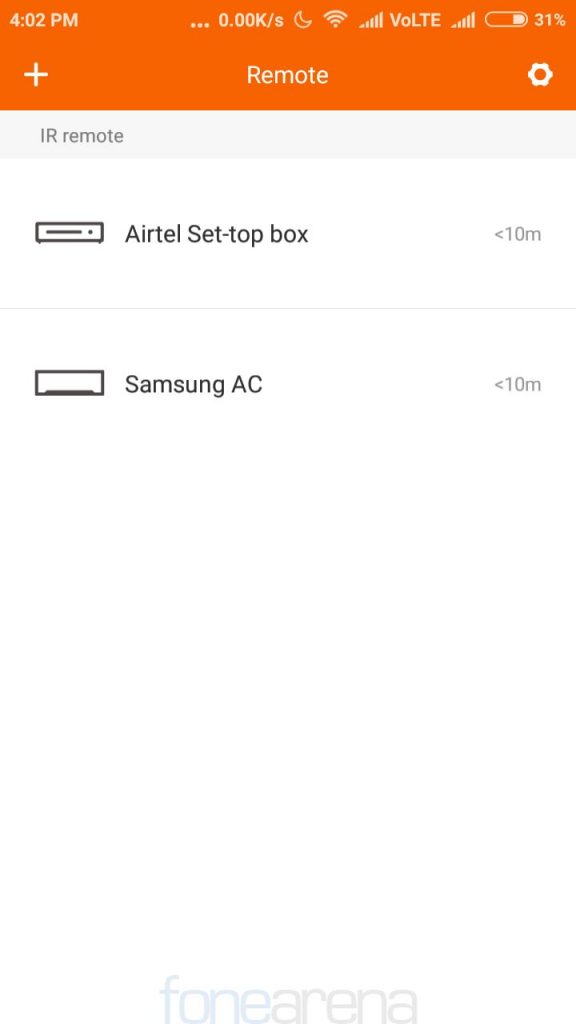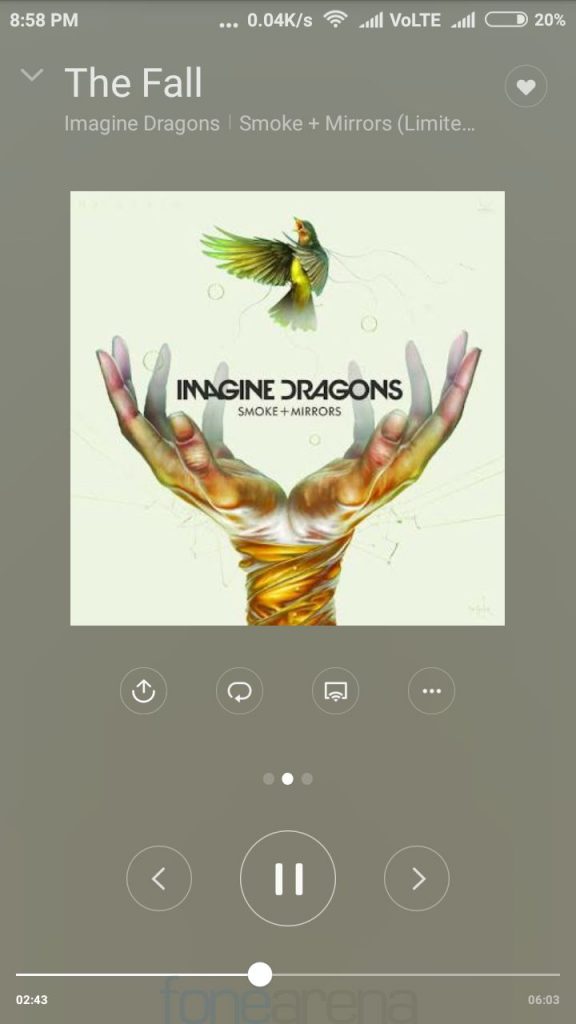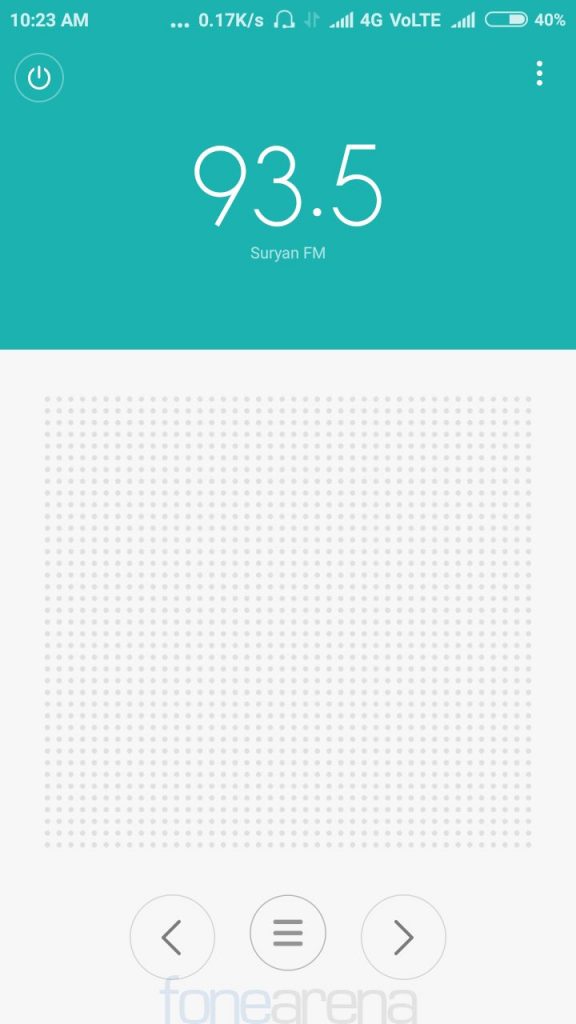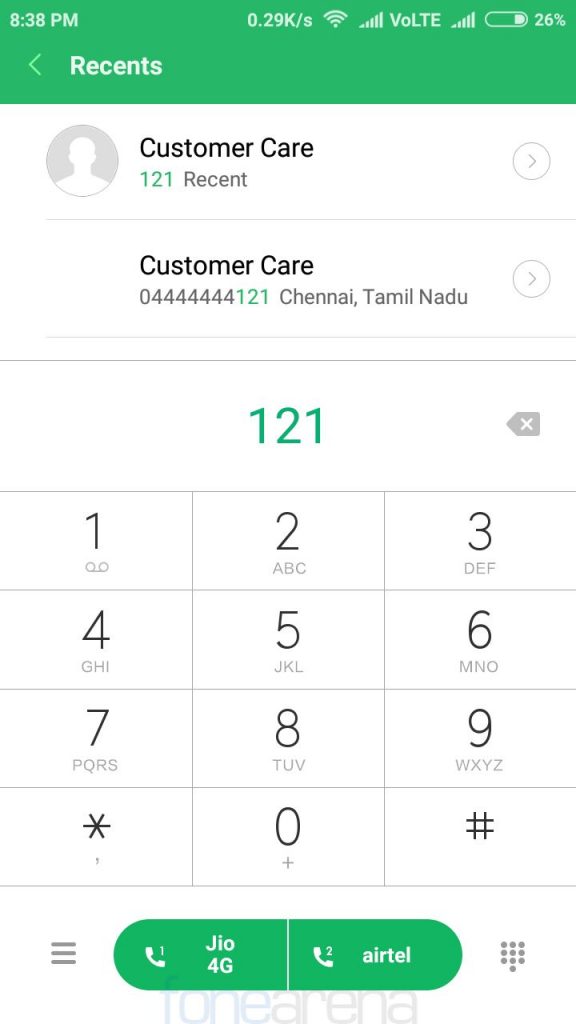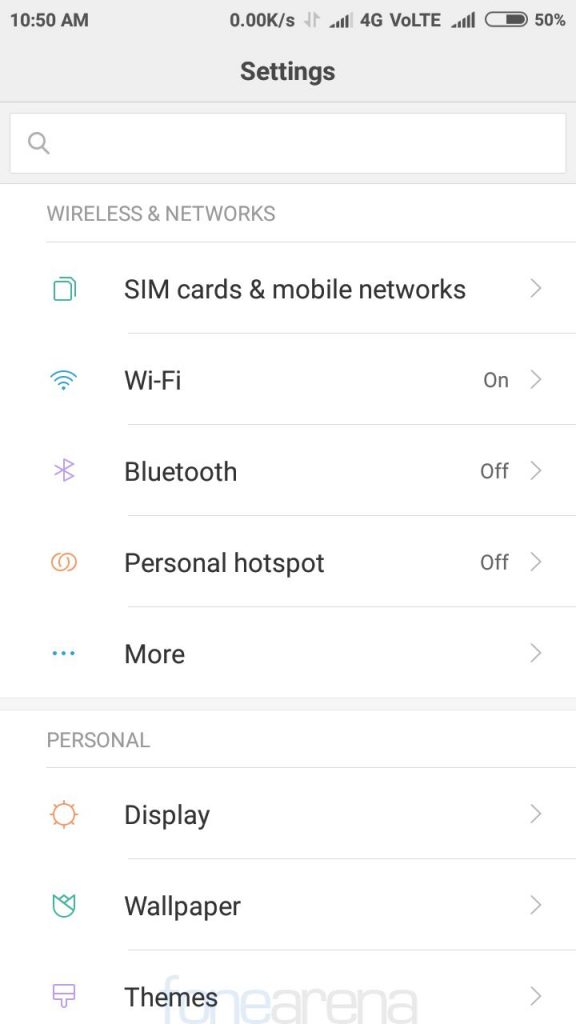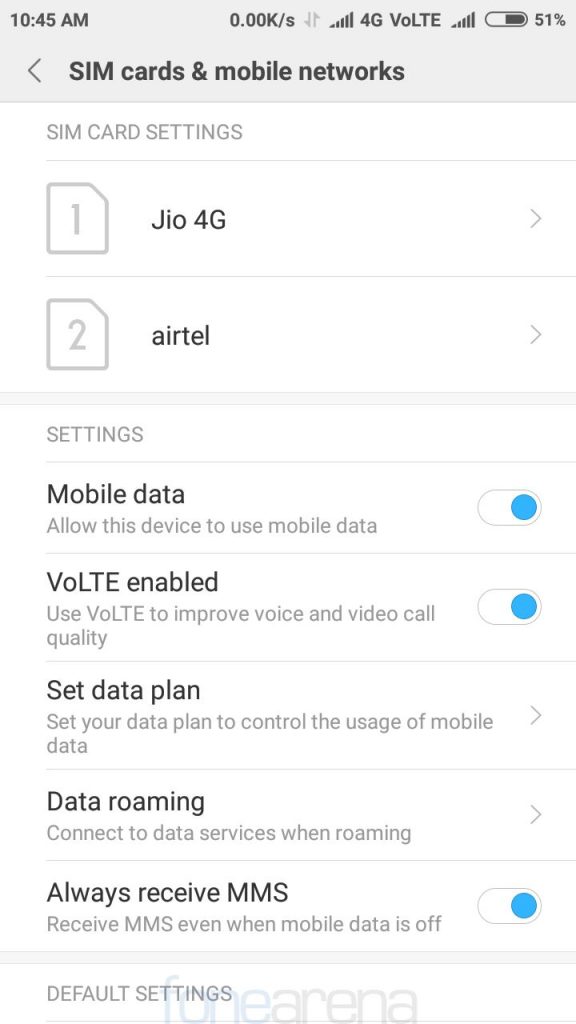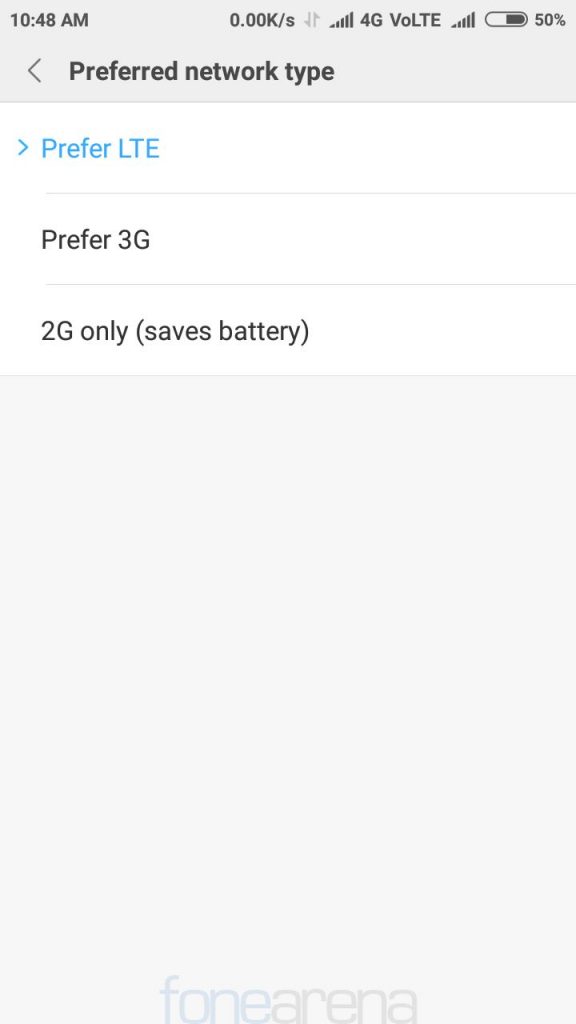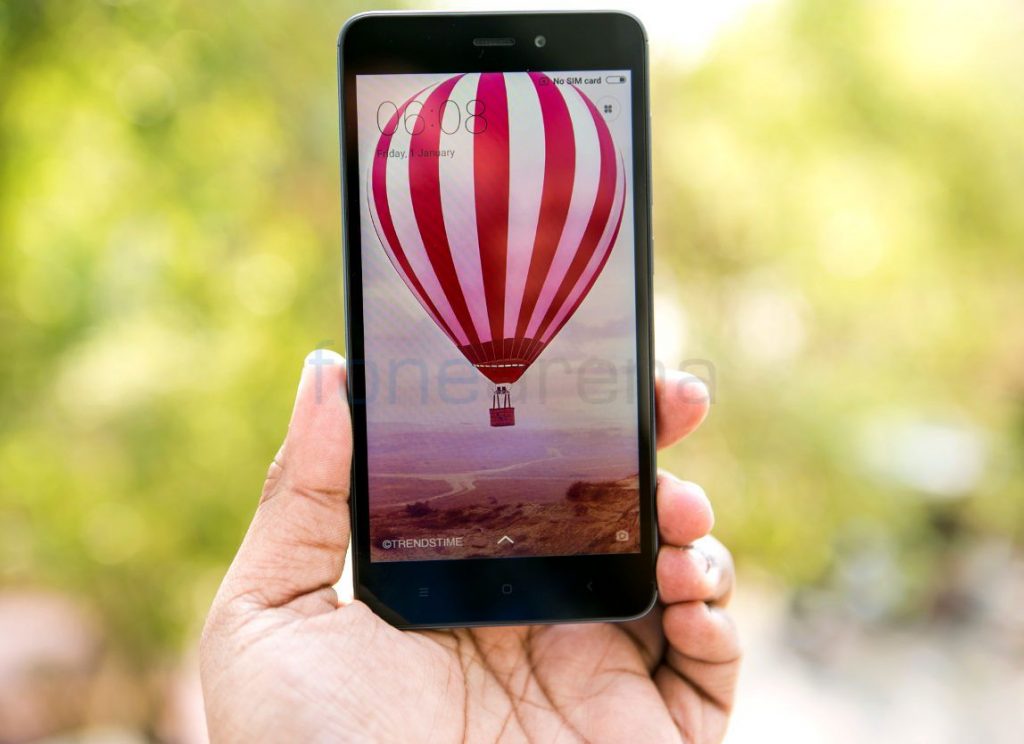
Xiaomi came back with a bang with the launch of the Redmi 4A last week, which is the company’s cheapest smartphone currently, targeted at entry-level users. The smartphone’s specifications look impressive for the price, is it worth the price? Let us find out in the review.
Unboxing
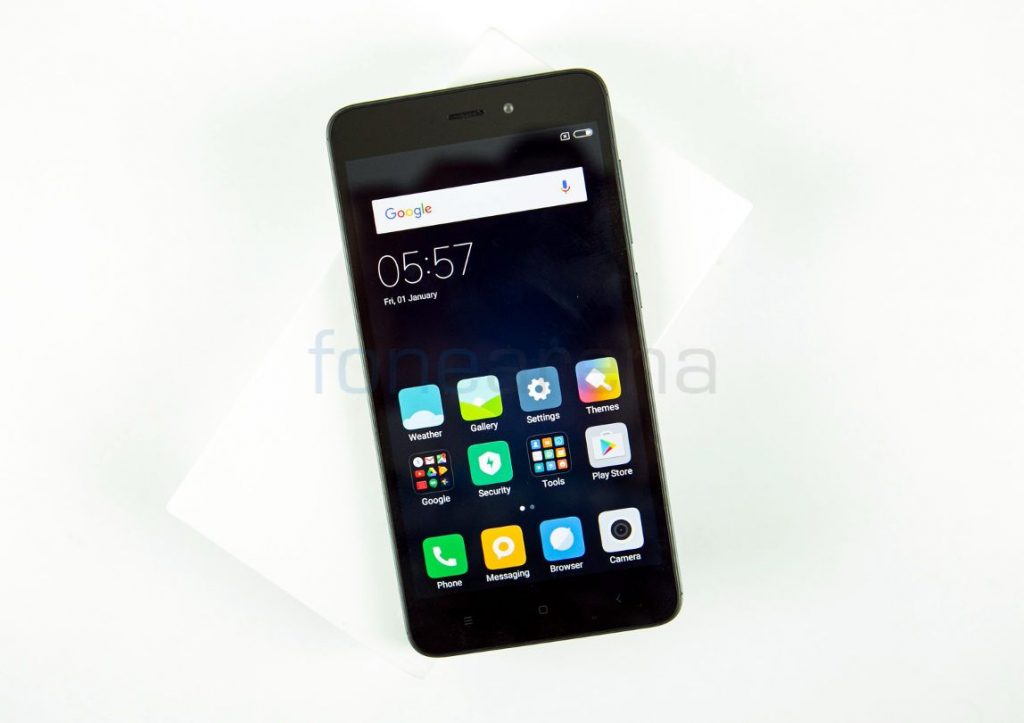
We unboxed the smartphone recently, check out the video below.
Video Review
Box contents
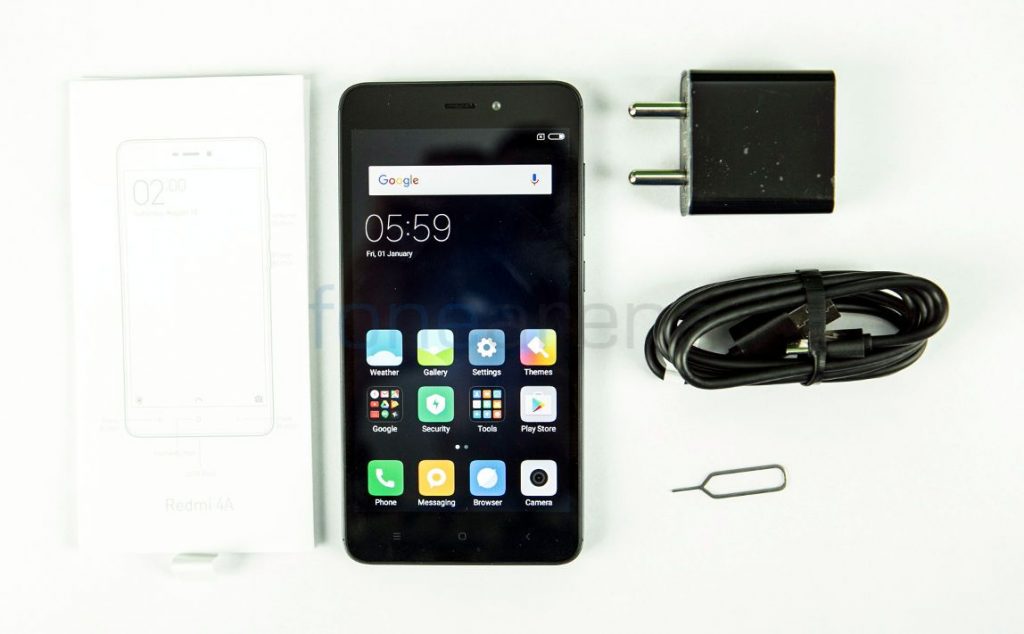
- Xiaomi Redmi 4A smartphone in Dark Grey color
- 2-pin charger (5V-1A)
- Micro USB Cable
- SIM ejector tool
- User guide and warranty information
Display, Hardware, and Design
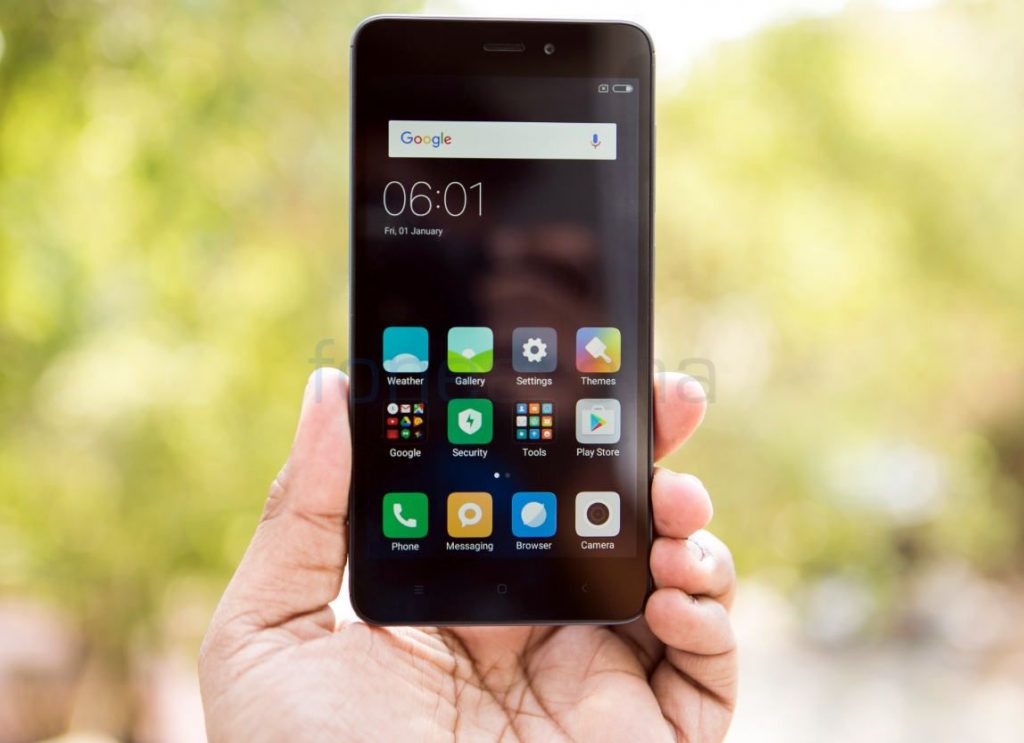
The Redmi 4A has a 5-inch HD display with a resolution of 1280 by 720 pixels and a pixel density of about 296 PPI. It has 1000:1 contrast ratio and 72% NTSC color gamut. The colors are vibrant and the sunlight legibility is good as well. The display is pretty good compared to other phones in the price range.
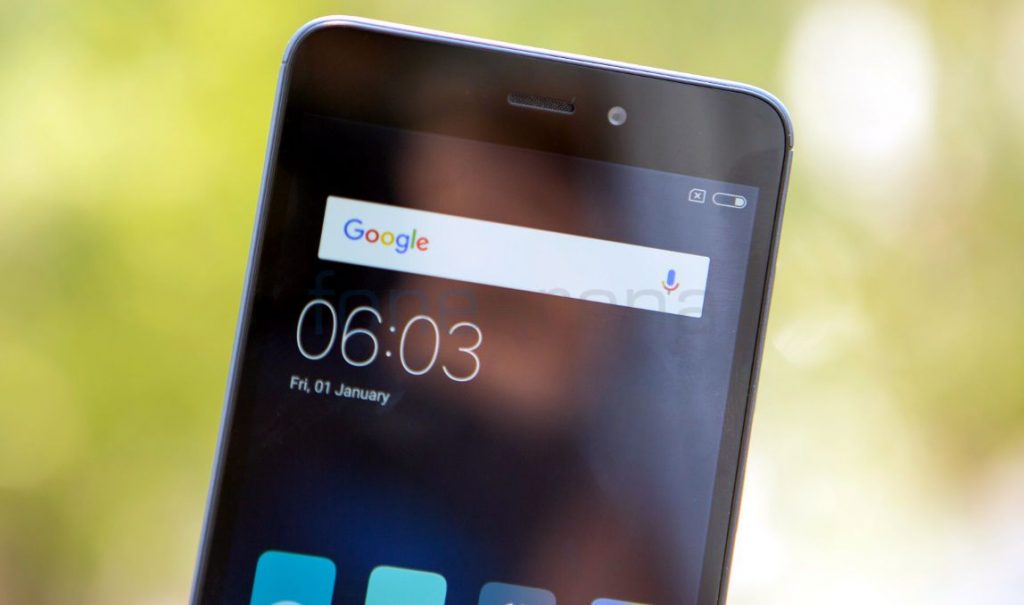
It has a 5-megapixel camera above the display, next to the earpiece. It has the usual set of ambient light and proximity sensors on the left side of the earpiece. These are hardly visible on the black bezel. It also has a gyroscope and a magnetic sensor, otherwise known as a magnetometer. It is good that Xiaomi doesn’t miss out on important sensors, even in its budget smartphone.
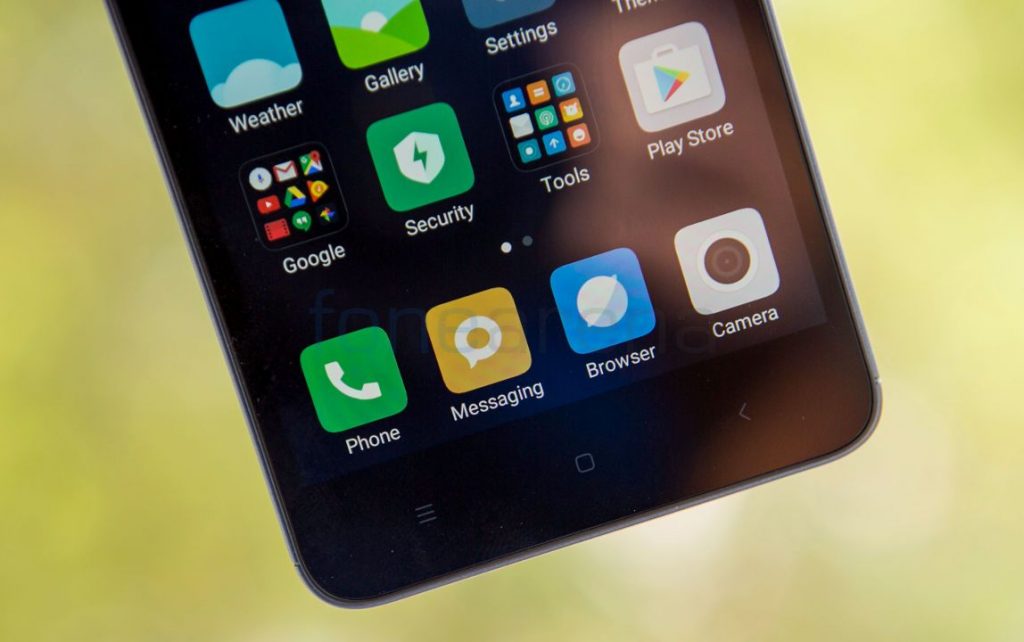
The usual menu, home, and back buttons are present below the display. These are not backlit but offers haptic feedback when pressed. It also has a small notification LED that is hardly visible when it’s off.
Even though it is a budget smartphone Xiaomi doesn’t miss out the Infrared sensor on the top for Remote function. 3.5mm audio jack and a secondary microphone are present on the top. Micro USB slot and the primary microphone are present on the bottom. On the right side, volume rockers and the power button are present.
It has a hybrid dual SIM slot (nano + micro / microSD), similar to the Redmi 3s series and the Redmi Note 4, so you can only use the secondary slot for SIM or microSD (up to 128GB) at a time.
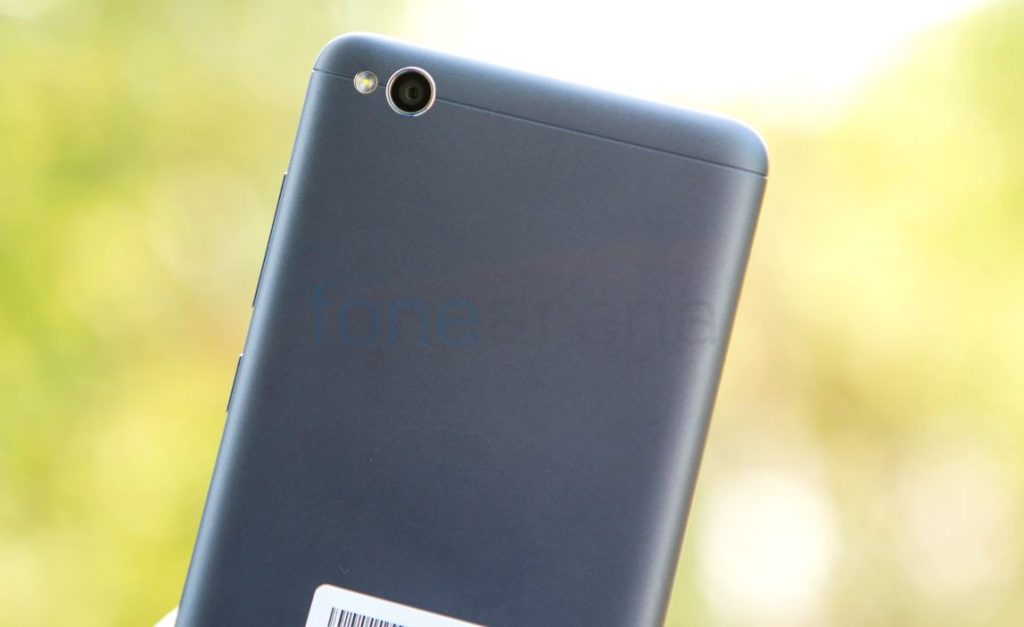
It has a 13-megapixel camera on the back with a single LED flash and f/2.2 aperture.
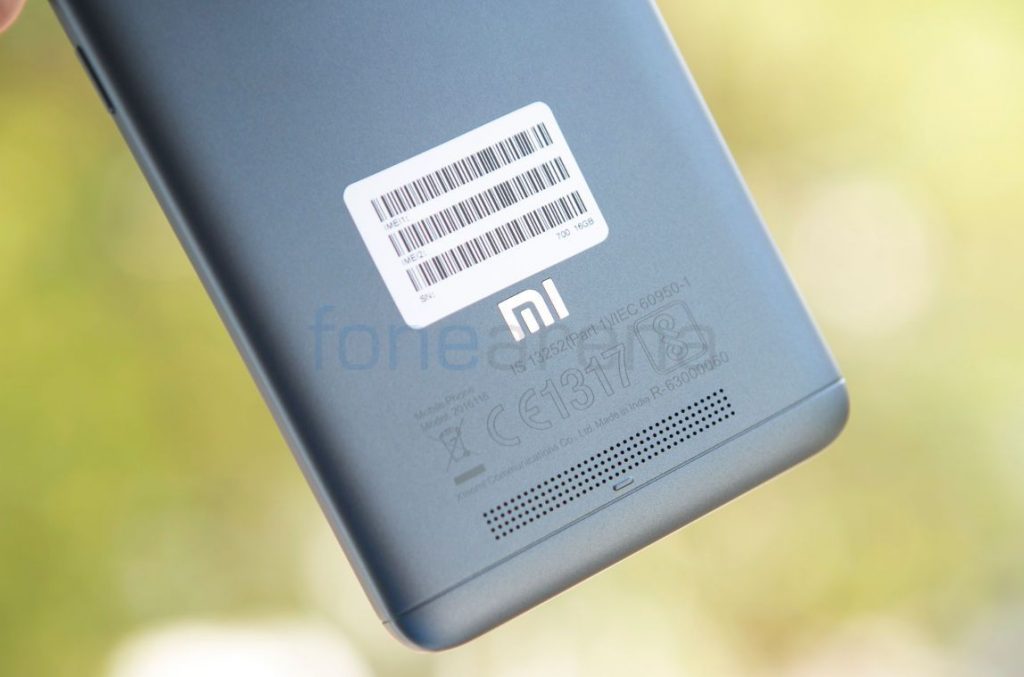
There is a speaker grill on the bottom part of the back.
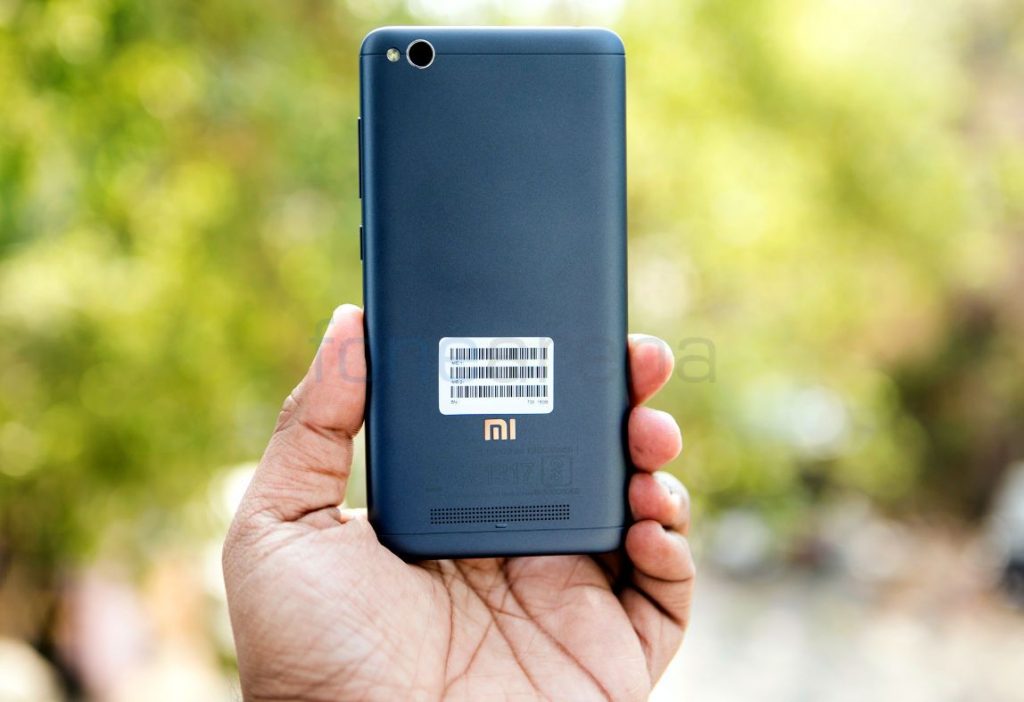
Unlike the Redmi 3s series, this one has a polycarbonate body, even though it looks like metal, but the matte finish offers a nice feel and the phone is solid to hold. Polycarbonate body also makes the phone light at just 131.5 grams, even though is packs a huge 3120mAh battery. It measures 139.9 x 70.4 x 8.5mm, making it slightly taller and wider than the Redmi 3s, but the thickness is the same.
Camera
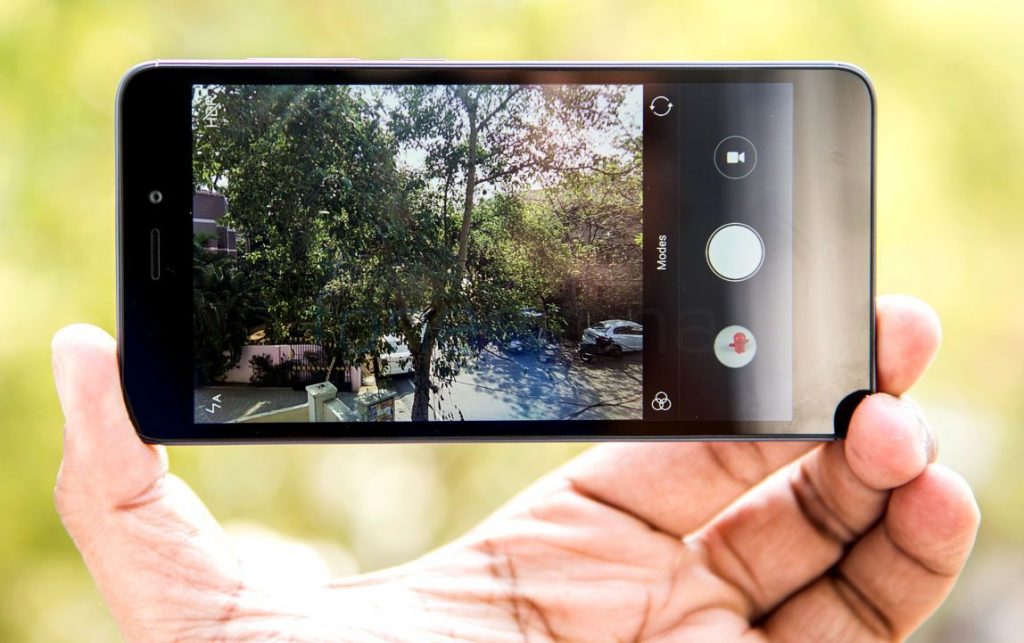
It has a 13-megapixel rear camera with LED flash and f/2.2 aperture and a 5-megapixel front-facing camera with f/2.2 aperture.
The camera UI is familiar with other Xiaomi smartphones with flash and HDR toggles on the left side, front camera toggle, option to select modes (Panorama, Timer (3 to 10 seconds), Audio trigger, manual mode to adjust white balance and ISO (100 to 3200), Straighten, Beautify, HHT (Hand held twilight) and Scene. It has image preview window, camera and video buttons on the right side. For the front camera, it has beautify mode and smart mode that guesses your age using facing recognition algorithm.
Coming to the image quality, daylight shots are good, HDR shots better, macro shots are surprisingly good. Low-light shots have noise as usual. Images with flash are good and the flash is not overpowering. The front-facing camera is good for selfies and video chats. Overall the phone has a decent camera for the price.
Check out some camera samples (Click the image for the full resolution sample)
HDR OFF
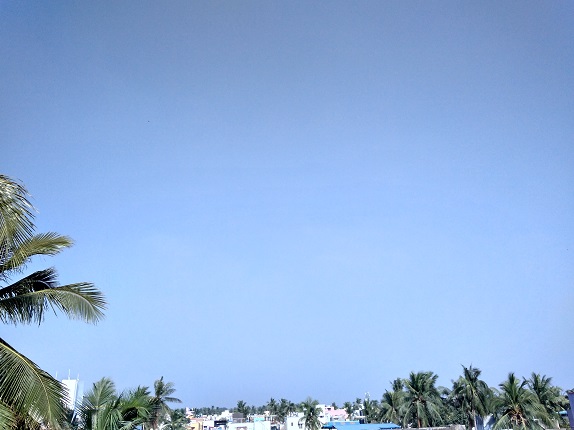
It can record videos at 1080p resolution. Video quality is decent and the audio is crisp, thanks to the secondary microphone. It doesn’t have slow-motion video recording, which you can’t expect at the price, but it has the time-lapse option. Check out the Full HD video sample below.
Check out the complete set of Xiaomi Redmi 4A camera samples here.
Software, UI, and Apps
The phone runs on MIUI 8.1 based on Android 6.0.1 (Marshmallow) with Android security patch for December 2016. It is not clear if or when it will get the Nougat update. Xiaomi pushes frequent MUI updates for their smartphone. It would be great if it pushes security updates regularly. The notification shade has a lot of quick toggles that are also customizable.
Out of 2GB RAM, you get 1.85GB of usable RAM, and 1.1GB of RAM is free when default apps are running in the background. Out of 16GB, you get only 8.44GB of free storage since OS and apps take over 7GB of space. The built-in Cleaner inside the storage lets you remove unnecessary pre-loaded apps which clear up around 900MB. Still, you only get around 9.5GB of usable storage, and these apps return when the phone is reset to factory settings. Xiaomi should have provided an option to select the apps you want to install since the usual storage is less. It doesn’t have the option to move apps to SD card and also doesn’t have an adaptive storage option to use microSD as internal storage.
Apart from the usual set of utility apps, it comes pre-loaded with Kindle, Facebook, WPS Office, MakeMyTrip, Flipkart and SwiftKey Keyboard. It also shows promoted apps inside the app’s window. All these apps can be uninstalled easily.
One of my favorite apps is Mi Remote that lets you control your home appliances easily. It worked flawlessly with Airtel Set-top box and Samsung AC. It also supports TV, A/V receiver, DVD Player, Projector, Camera and more.
Music Player and FM Radio
The Mi Music Player is the default music player. It also has FM Radio with recording. Audio through the speaker is decent. Since the speaker is present on the back of the phone, audio gets muffled when the phone is on a flat surface. Audio through earphones is good as well.
Calling and Messaging
The dialer and messaging UI are similar to other Xiaomi smartphones running MIUI 8. Since this is a dual SIM phone, you get the option to select either SIMs when calling or sending a text message. There are no call drops and the earpiece volume is good.
Dual SIM and Connectivity
It has the usual set of connectivity features such as Wi-Fi 802.11 b/g/n, Bluetooth 4., GPS + GLONSASS. It also has USB OTG support that lets you connect external drives. It has 4G connectivity and also has Voice-over-LTE (VoLTE) support for Reliance Jio. Both the SIMs support 4G, but you can enable 4G only in one SIM at a time, while the other goes to 2G. You can set preferred SIM for a voice call, text and data from the SIM card manager. Just like most other Xiaomi smartphones like the Redmi Note 4 and Redmi 3s series, this lack LTE band 1 (2100MHz) so Vodafone 4G doesn’t work in some circles, including Tamil Nadu.
Performance
Coming to the performance, the phone is powered by a quad-core Snapdragon 425 processor with four ARM Cortex A53 cores clocked at 1.4GHz per core and has 2GB of RAM. The performance is good without any lags. It also has a 500MHz Adreno 308 GPU. Since this is not a powerful SoC the GPU is just average, so the gaming performance is not on par with the Redmi 3s that has an Octa-Core Snapdragon 430 SoC with Adreno 505 GPU. That said, check out some synthetic benchmark scores below.
AnTuTu Benchmark 6
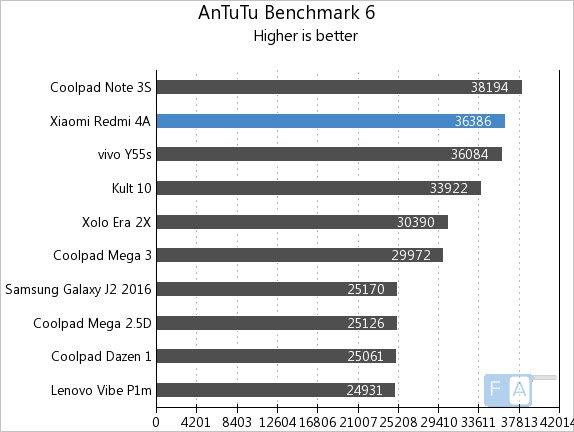
It scored 36386 points in the AnTuTu Benchmark 6, grabbing the second spot.
Geekbench 3 Single-Core
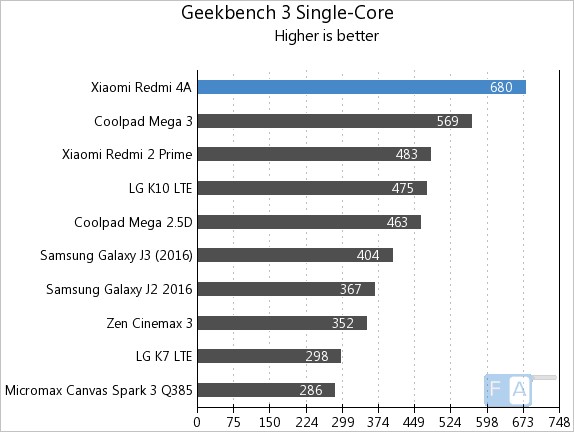
It tops the Geekbench 3 Single-Core benchmark test with 680 points.
Geekbench 3 Multi-Core
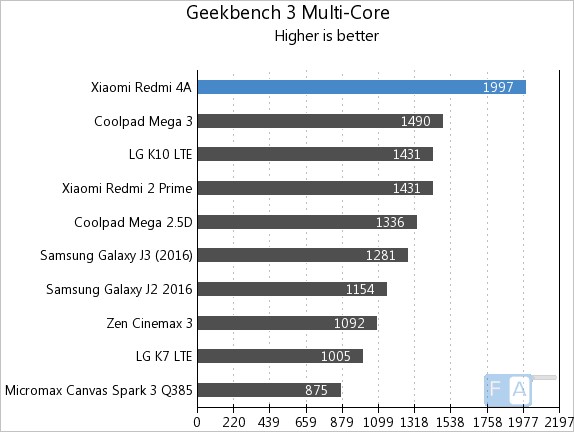
It tops the Geekbench 3 Multi-Core benchmark test as well by scoring 1997 points, way better than other smartphones.
3DMark Ice Storm Unlimited
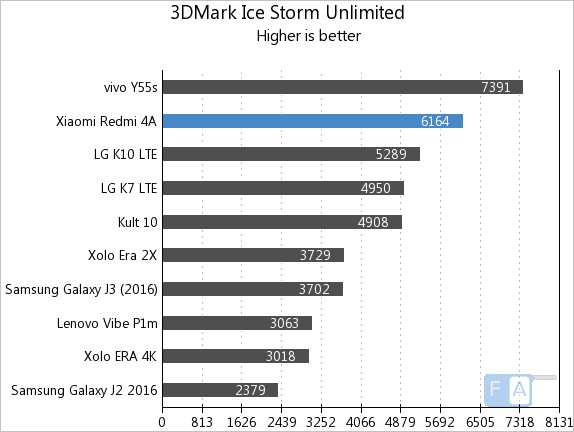
It scored 6164 points in the 3DMark Ice Storm Unlimited GPU benchmark.
Basemark OS II
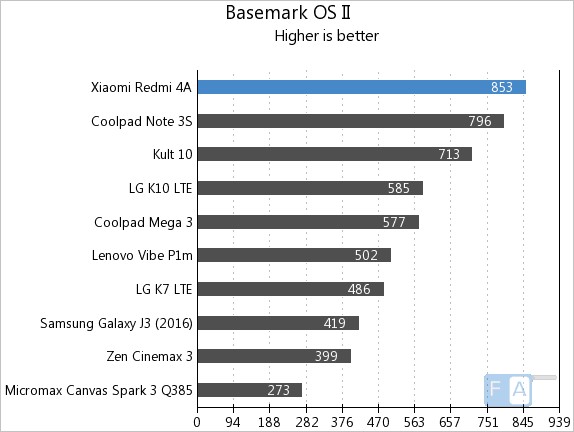
It scored 853 points in the Basemark OS II benchmark and topped the chart.
Battery life
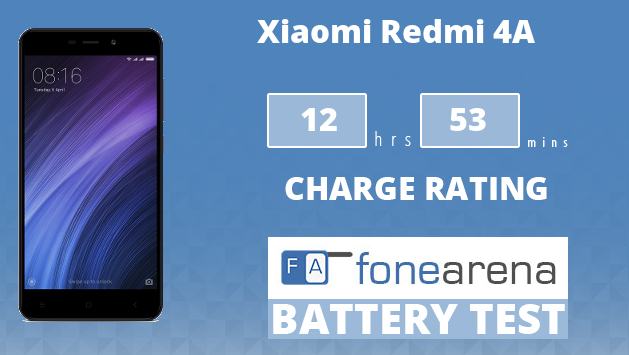
Coming to the battery life the 3030mAh (minimum) / 3120mAh (typical) built-in battery offers good battery life. It lasts for a whole day with average use and lasts more than that with minimal use. Sadly, the phone doesn’t have fast charging so it takes more than 2 and half hours to charge the phone.
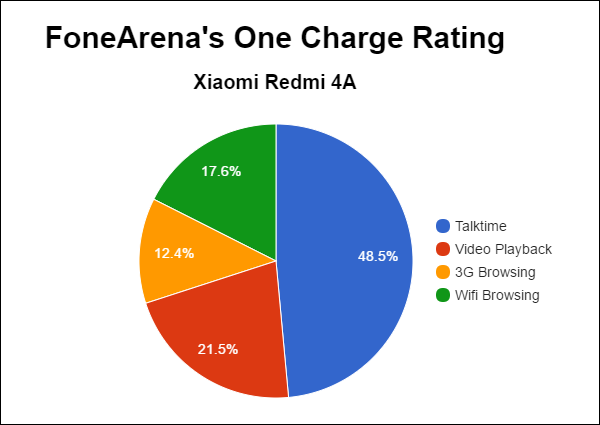
It achieved a One Charge Rating of 12 hours and 53 minutes. Check out the complete set of battery life test results here.
Conclusion
At a price tag of Rs. 5,999, the Xiaomi Redmi 4A is a good deal. It has all the required sensors, including an infrared sensor for remote control. The camera is decent for the price, and the build quality is good even though it has a polycarbonate body. I personally like the polycarbonate body with a smooth matte finish on the Redmi 4A compared to Redmi 3s with a metal body.
At Rs. 6,999 Redmi 3s offers a metal body, slightly better camera and a faster Snapdragon 430 Octa-Core processor, so most people might not go for the Redmi 4A. If you are tight on the budget, go for the Redmi 4A, otherwise, the Redmi 3s is the preferred choice. Xiaomi should have provided more storage since about 9GB of storage runs out quickly. Also, it would have been great if it had added a dedicated SIM slot, instead of the hybrid slot since the internal storage is less.
The Redmi 4A goes on sale every week exclusively on Amazon.in and Mi.com, but you will have to wait till 6th April if you are looking to buy the Rose Gold version. To summarize, here are the pros and cons of the smartphone.
Pros
- Good build quality
- Infrared sensor
- Competitive pricing
Cons
- Hybrid dual SIM might not be preferred by everyone
- Usable internal storage is less
- Lacks Band 1 (2100MHz) for Vodafone 4G in some circles

